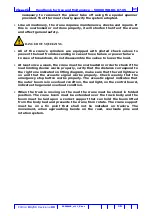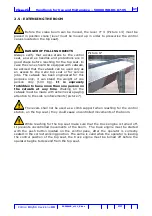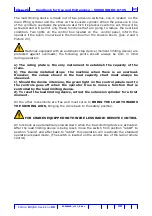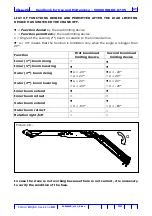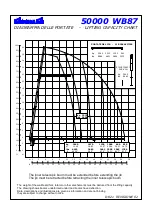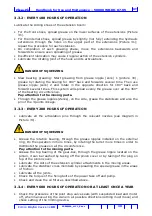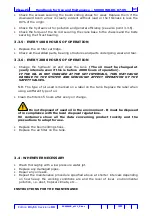
UT
Handbook for Use and Maitenance – 50000 WB-80-87-95
Edition
01/11
Revisione
00
29
50000WB_e111_E.doc
2.8 - LOAD CAPACITIES
Rated lifting capacities are
valid only with: fully extended
outriggers
(cranes
and
auxiliary outriggers systems),
when the crane basement is
horizontal and water leveled,
and the boom is used within
the limit of the 180° located
behind the truck driver's cab
(for cranes installed behind the
truck driver's cab).
The load capacities (Picture
25) are shown in the table
applied to the crane and are
only valid for lifting operations
performed with a hook, a pallet
grab, a non-grabbing bucket or
other devices that do not act
on the structure other than as
designed for the hook.
The
load
capacities
are
calculated when using the
crane on vehicle.
With these load capacities, the use of grab buckets, grabs, magnets or anything else
which may cause similar action on the crane is not permitted.
The slinging and the holding devices are
always included in the useful load capacity.
Before the load is lifted make sure that the
hook is over the load centre of gravity and
that nobody is inside the working area. Make
sure there are not obstacles between lifting
and unloading areas.
To lift weights corresponding to the permitted
loading capacities, to the indicated horizontal
reach, it’s necessary to position the main
boom in the maximum power position, that is
reached when the above mentioned boom is
out of 30° compared to the base of the slew
bearing.
The crane is equipped with 1 pressure gauge
located on the top seat, it reads the working pressure and gives the load condition of
the crane. The general load condition is indicated as follows: the yellow area starts at
90% of maximum moment and stops at 100%; the red area indicates overload.
Never raise loads when the pointer is in the red area.
Picture 25 – Sticker load capacities
Picture 26


